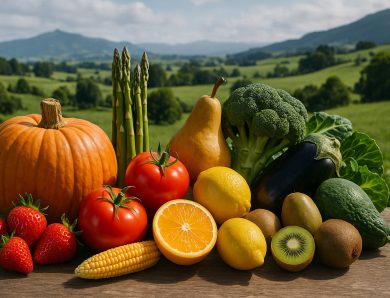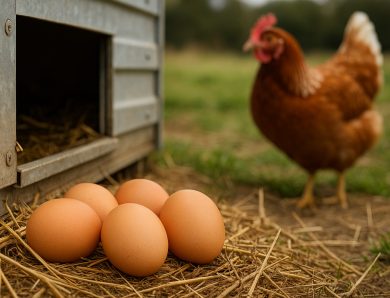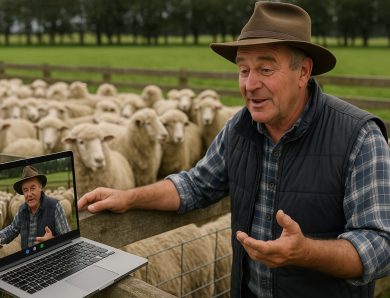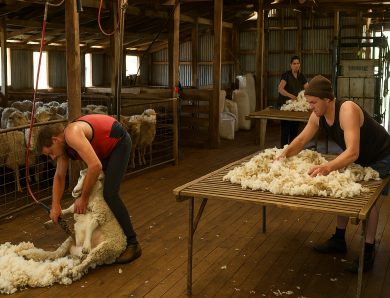
The Journey of a Carrot: From Soil to Supermarket
What does it take for a carrot to land on your plate? More than most imagine. Behind its crisp orange exterior lies a story of science, sweat, sustainability, and logistics. At the core is the paddock — the starting point of a food system shaped by innovation and precision.
1. Selecting the Soil: The Groundwork Begins
Carrots demand a specific environment. Loose, sandy loam works best. Farmers test soil for pH balance, drainage, and residual chemicals. Any excess nitrogen can cause branching — a cosmetic flaw, but one that reduces market appeal.
Before seeds even enter the ground, cover crops like oats or rye are often grown and tilled under. These improve structure and increase organic matter. In regions across New Zealand, particularly around Canterbury and Horowhenua, this phase is tightly scheduled to match seasonal weather cycles.
2. Seed to Sprout: Sowing with Accuracy
Planting begins with calibrated machinery. Carrot seeds are tiny, so uniform depth is vital. Too shallow and they dry out. Too deep and they fail to emerge. Precision seeders distribute them in neat rows, spaced just right for airflow and root growth.
Timing is non-negotiable. Seeds sown in cool, moist spring conditions yield straighter roots. Crop rotation is observed to minimize disease buildup in soil. Carrots rarely follow carrots.
3. Nurturing the Crop: Growth Under Surveillance
From germination to harvest, the crop’s progress is monitored weekly. Smart irrigation systems, often driven by sensor data and weather forecasts, optimize water use. Too much water, and carrots crack. Too little, and they lose their crunch.
Weed control is handled mechanically and chemically. Herbicides are applied using GPS-enabled sprayers to avoid overlap. Beneficial insects are encouraged through native planting nearby to control pests like carrot rust fly without excessive spraying.
4. Harvest Timing: Balancing Maturity and Market Demand
A carrot’s peak harvest window can last just a few weeks. Sugar content, crunch, and color are measured before pulling begins. Mechanical harvesters lift the roots without snapping them. Workers on the machine trim greens and inspect each carrot in motion.
Timing here affects shelf life. If harvested too early, they’re bland. Too late, and texture suffers. Growers often stagger planting times to ensure consistent supply for processors and retailers.
5. Washing and Grading: Prepping for Public Eyes
Straight from the soil, carrots head to washing lines. High-pressure water jets remove dirt. Brushes scrub gently to avoid scarring. Afterward, they’re graded by size, shape, and color.
Large carrots head to processing plants. Medium-sized ones go to supermarkets. Smaller ones might end up in snack packs or frozen blends. Any unmarketable roots are diverted to livestock feed or compost.
Grading systems include:
- Grade A: Uniform, unblemished, supermarket-ready
- Grade B: Minor flaws, sold in bulk or for processing
- Grade C: Split or short, used for juice or animal feed
6. Packaging with Purpose: Form Meets Function
Carrots are sensitive to moisture loss. Packaging is designed to reduce dehydration and microbial spoilage. Film bags with micro-perforations balance oxygen levels and humidity. Some lines use recycled plastics, responding to sustainability targets set by retailers.
Labels include farm traceability codes. This allows any issue to be tracked back to a specific paddock and planting date. Food safety systems tie directly into national compliance frameworks.
7. Cold Chain Distribution: Keeping It Fresh
Once packed, carrots move swiftly into chilled storage. From here, they enter a logistics system that rarely pauses. Refrigerated trucks transport them to regional distribution centers. Temperature is held around 0–2°C to retain snap and sweetness.
Transport isn’t just about speed — it’s about consistency. Even brief exposure to warmth reduces shelf life. Data loggers ride along to ensure conditions stay within range.
8. Retail Display: The Final Stage Before Purchase
At the supermarket, display bins are topped up frequently. Staff rotate stock to keep older carrots at the front. Misting systems in some stores help maintain surface humidity.
Here, appearance matters more than ever. Research shows consumers prefer carrots with visible tops trimmed cleanly, vibrant color, and a smooth finish. Anything limp or blemished is quickly pulled from shelves.
9. The Role of Events like NZ AgriFood Week
Behind this entire supply chain are ongoing conversations between farmers, researchers, marketers, and policy-makers. NZ AgriFood Week serves as a hub for these discussions. Topics such as soil health, data-driven irrigation, sustainable packaging, and traceability systems find real-world testing through events and forums.
Such gatherings encourage knowledge sharing across sectors. They bridge paddock and policy, ensuring that even something as humble as a carrot benefits from systemic thinking and coordinated innovation.
10. Waste, Rescued: What Happens to the Rest
Not every carrot makes the cut. Seconds and surplus are often redirected through food rescue organizations. Others support composting programs that close the loop — turning misshapen carrots back into nutrients for next season’s crop.
Supermarkets and food processors increasingly publish diversion rates, aiming to reduce landfill waste and carbon footprints. Carrots play a visible part in this shift due to their volume and perishability.
From sowing to scanning at the checkout, every step in a carrot’s life reflects decisions rooted in science, sustainability, and market expectations. It’s a vegetable shaped not only by soil but by systems — visible proof of how our food gets from the ground to the hand, with minimal loss and maximum value.




No Comment